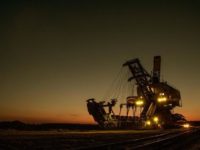Guest post by Hannah Madison
It is essential to understand that the mining supply chain would need to be involved in all efforts to achieve the goals of the Paris Agreement to address the consequences of global warming.
As a result, fully decarbonizing mines will involve large capital expenditures. However, several mines currently afford to reduce their carbon footprint through the use of electrification, renewable energy, and operational efficiency. This is because mining and climate change goes hand in hand.
Mining and Climate Change: Understanding the Correlation
Large diesel loaders and trucks used in mining frequently run to use in the mining process, producing CO2, which is the primary cause of anthropogenic climate change.
Additionally, trees’ utility in absorbing CO2 added to the environment is diminished when trees are cut down to make place for mining operations.
Some mining firms replace the woods they cut down with new ones to restore the natural equilibrium. However, not much has been done to limit emissions caused by mining trucks and loaders, except for maintaining them in good functioning condition.
Overall, coal-fired power plants and the enormous number of vehicles, trucks, buses, trains, and airplanes in our society outweigh the tiny contribution made by mining.
Mining business: effecting the biodiversity
Currently, 30 to 50 percent of iron ore, copper, gold, bauxite, and zinc production occurs in areas with already high levels of water stress. More regular droughts and floods are predicted due to climate change, which will modify the water supply and disrupt activities.
Certain water-intensive mining activities can be in danger even in places with little water stress. Many countries can lose billions of dollars due to climate change.
The mining sector too impacts the biodiversity as it disrupts the natural land by cutting down the forest land. Many flora and fauna are cut down, and some get displaced from their natural habitats. These are affecting the ecosystem, leading to climate change due to the mining of minerals.
Mining Sector and How it Contributes to Climate Change
Mining is a primary sector of the economy, but it has a huge impact on the global economy. The mining sector is the backbone of an economy, as many underdeveloped countries rely only on mining minerals and resources.
Whereas this sector can cause adverse effects on the climate and affect the ecosystem. This sector damages the ecosystem by cutting of trees which further leads to landslides.
Underground and surface mining needs digging of holes to extract minerals from the earth’s surface. In this method of mining, it can cause contamination of the groundwater. This also leads to the removal of the soil’s top layer, which causes in loss of humus from the soil and makes the soil barren.
Processing units used in mining:
In the process of mining minerals, various impure materials are extracted from the soils. Those impure materials are needed to be eliminated from the precious minerals. This is why the processing units need to be installed to segregate the waste material from pure and valuable minerals. This processing unit works in fossil fuels which contaminate both atmosphere and soil. This contamination may further lead to climate change in the form of floods, cyclones, drought, uneven rainfall, etc.
Understanding the mining and climate change:
The process of decarbonization has become very important for our globe. The growing concern of the mining sector is evidently expressed regarding the constancy of future ground water supplies due to changes in weather patterns and climatic stability.
The majority of studies, mine planning, design, and monitoring have concentrated on how mining operations impact the landscape and natural resources.
It is the prime time to be serious and protect our planet earth from the devastating effect of mining and climate change.





